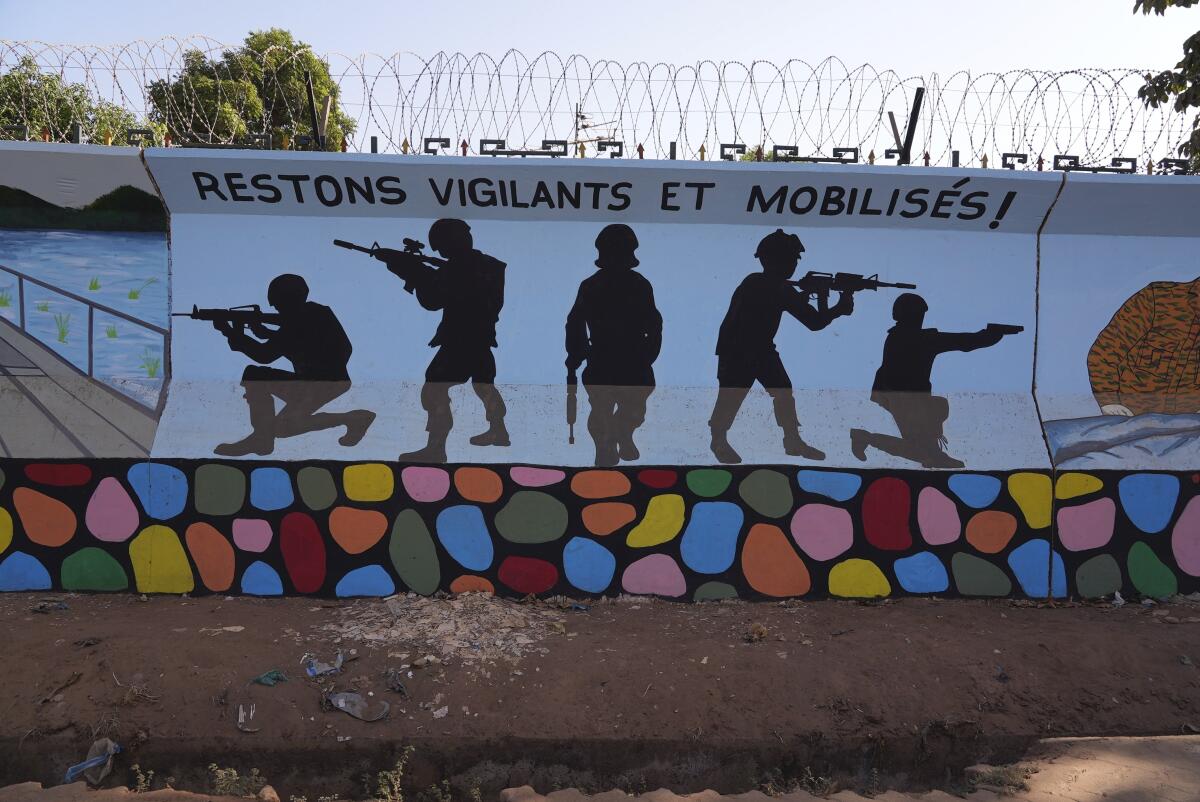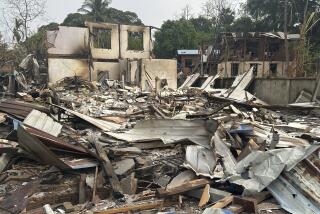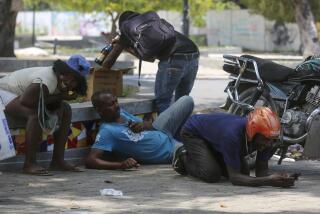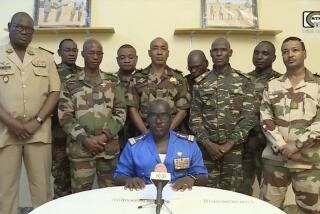Burkina Faso’s security forces are killing more civilians. Survivors detailed 1 village’s massacre

DAKAR, Senegal — Women slain with babies wrapped against their bodies, lifeless children intertwined together, a 2-month-old face-up on the ground with puppies crawling on his tiny frame. The scenes were horrifying, but the 32-year-old farmer felt he had to document them, as proof of the carnage in his central Burkina Faso village.
More than a dozen relatives were killed Nov. 5 when security forces attacked with mounted pickup trucks, guns and drones, he told the Associated Press on condition of anonymity, for fear of retaliation. He said he hid in a neighbor’s compound and took a series of photos before fleeing the next morning.
Dozens more were killed that day in Zaongo village, according to his account and that of two other survivors, as well as a United Nations report citing government figures. The images the man sent AP and the interviews with the three survivors are rare firsthand accounts amid a stark increase in civilian killings by Burkina Faso’s security forces as the junta struggles to beat back a growing insurgency and attacks citizens under the guise of counterterrorism.
Most attacks — including the slaying of children by soldiers at a military base last year, uncovered in an AP investigation — go unpunished and unreported in a nation run by a repressive leadership that silences perceived dissidents.
More than 20,000 people have been killed since the violence linked to Al Qaeda and the Islamic State group first hit the West African nation nine years ago, according to the Armed Conflict Location and Event Data Project, a U.S.-based nonprofit. The fighting has divided a once peaceful population, blockaded dozens of cities and led to two military coups.
Burkina Faso’s government spokesman didn’t respond to requests for comment about the Nov. 5 attack. Previously, officials have denied killing civilians and said extremist militants often disguise themselves as soldiers.
The three survivors told AP they’re certain the men were security forces, not Islamist militants. They describe them wearing military uniforms, one with a Burkina Faso flag fastened to him. The farmer saw a helicopter flying toward the village in the attack’s aftermath — those are used solely by the military, not insurgents.
The United Nations urged the government to investigate, hold those responsible accountable, and compensate victims, said Seif Magango, of the U.N. Human Rights Office.
Burkina Faso’s prosecutor’s office said it opened an investigation. Four months later, survivors said they’ve had no news.
‘They massacred them’
It was early morning when the farmer heard gunshots in the distance. Violence in Namentenga province is frequent, locals said — shootings and patrolling soldiers are common.
But this Sunday was different.
About 3 p.m., the farmer said, hundreds of men — most in military fatigues — stormed through on motorbikes and trucks and started indiscriminately killing people.
He hid at the neighbor’s home, he said, and after hours of gunshots, the man with the flag entered.
“The soldier told us that his colleagues were in the other compound,” the farmer said. “He said he didn’t want to hurt us, but if the others realized we were still alive, they’d kill us.”
When the guns stopped, he said, he left the compound and saw Zaongo littered with the dead.
“These people sought shelter in their huts, but they massacred them,” the farmer said.
It’s unclear what prompted the attack, but locals said most times, security forces think villagers are working with extremists.
The junta on war footing
Since seizing power in September 2022, the junta has threatened rights groups and journalists and carried out attacks against civilians. It’s on a war footing as it tries to beat back the militants, who’ve overtaken more than half the country, according to conflict analysts and experts.
The junta is distancing itself from regional and Western nations that don’t agree with its approach. This year, it left the West African regional economic bloc known as ECOWAS and created an alliance with Mali and Niger, also run by military juntas.
The junta severed military ties with former colonial ruler France. Officials have welcomed several dozen Russians tasked in part with keeping the junta in power, according to several conflict experts and a diplomat who spoke on condition of anonymity because he wasn’t authorized to discuss the matter.
In November, days after the Zaongo massacre, 50 Russians arrived in Burkina Faso to protect the junta, influence public opinion and provide security services, said Lou Osborn with All Eyes on Wagner, a project focusing on the Russian mercenary group, which operates in a handful of African countries.
The United States said it has cut and suspended assistance to Burkina Faso’s military but still supplies nonlethal equipment to civilian security forces such as the national police. In January, it delivered nearly 100 bikes and pickups.
In a statement, the State Department said it’s provided $16 million in “counterterrorism capacity building assistance” since 2022.
“We are not aware of any diversion of misuse of recent equipment,” it said. “We take allegations seriously and will continue to monitor and evaluate.”
Civilians in the middle
During the Nov. 5 attack, men in military uniforms speaking French and local language Moore called for men to leave their houses, a 45-year-old mother told AP.
Through the window of the home where she hid, she said, she saw relatives killed — more than 15.
She said a soldier motioned for her to lie down silently. The men dressed, looked and sounded like soldiers who pass through inspecting people’s documents, she said.
The third survivor who spoke to AP, a 55-year-old man, said villagers had been accused of working with militants because they refused to join tens of thousands of volunteers fighting alongside the military.
Recruiting is part of the junta’s strategy. Residents said this contributes to civilian killings as volunteers round up anyone they suspect of extremist ties, and it provokes the militants to attack communities with volunteers.
Civilians are caught in the middle as violence intensifies. More than 2 million have been displaced and tens of thousands face severe hunger, the U.N. says.
We’re frightened
Survivors fear that bodies still lie on the ground rotting in Zaongo, now occupied by the extremist militants. Some relatives returned a week after the deaths, but there were too many bodies and not enough time to bury them, they said.
It’s still unclear how many were killed — reports from survivors, the U.N. and aid groups vary, from 70 to more than 200.
Survivors, displaced in different parts of the country, are calling on the government to hold the killers accountable.
“When a door slams or a child shouts, we’re frightened,” the surviving woman told AP. “If we go back there, we’ll just die.”
Associated Press writer Mednik reported from Dakar, Biesecker from Washington.
More to Read
Sign up for Essential California
The most important California stories and recommendations in your inbox every morning.
You may occasionally receive promotional content from the Los Angeles Times.










